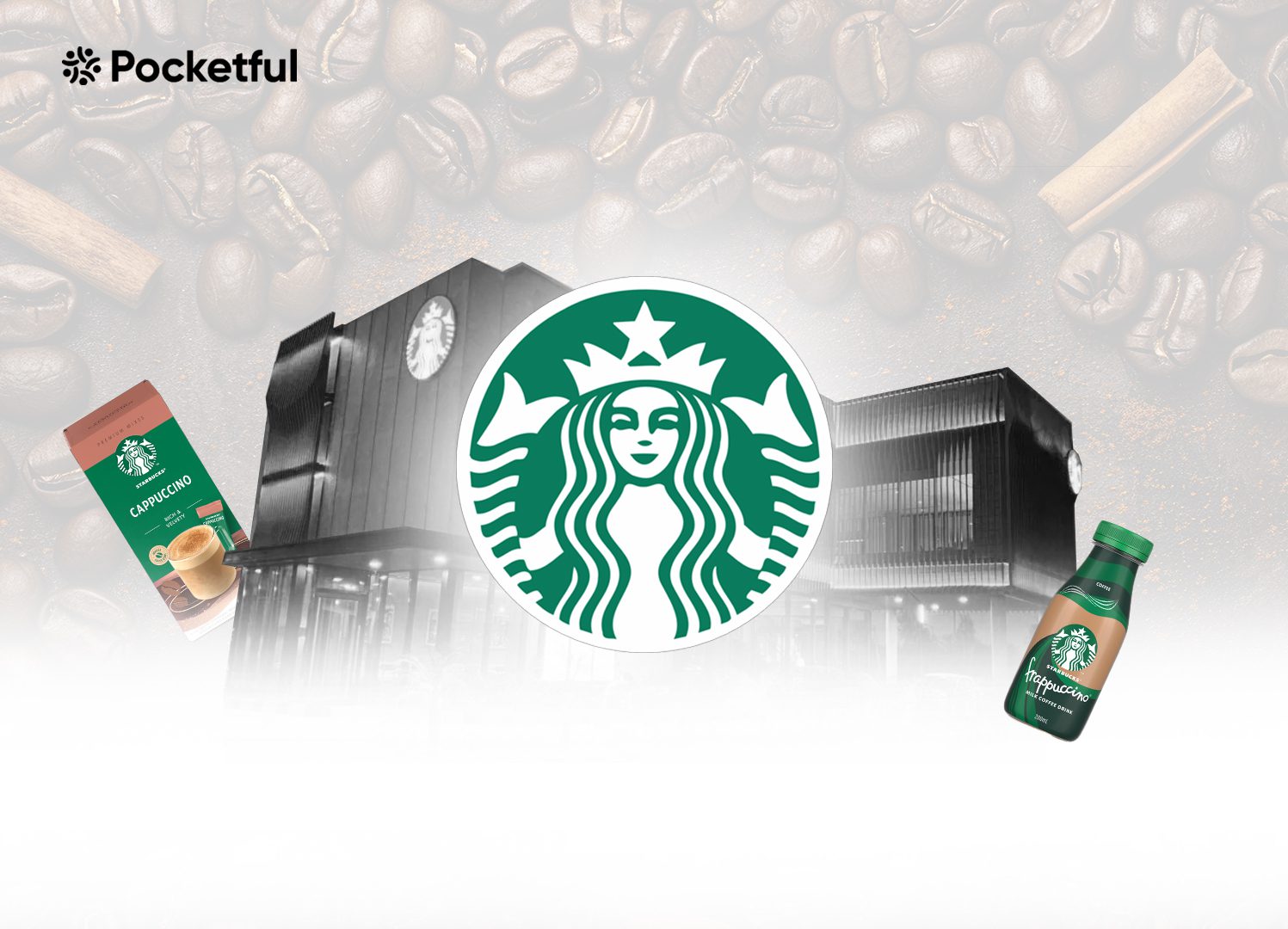| Type | Description | Contributor | Date |
|---|---|---|---|
| Post created | Pocketful Team | Sep-26-24 | |
| Add new links | Nisha | Feb-18-25 |

- Blog
- case study on starbucks marketing strategy
Case Study on Starbucks Marketing Strategy

Starbucks is one of those revolutionary companies around the world that has impacted the daily lives of its customers. Its impact is evident from the fact that whenever someone talks about coffee, the Starbucks name just pops up.
In this blog, we will discuss how Starbucks bloomed from one Seattle store into one of the favorite brands with over 30,000 locations worldwide. We will dig deeper into their brilliant marketing strategy and community-building initiatives that keep their customers coming back. So, get your favorite drink to hold on to, and let’s go through this quest together in the world of Starbucks!
Starbucks – An Overview
Starbucks was founded by Jerry Baldwin, Zev Siegl, and Gordon Bowker in 1971 as a single store in Seattle that only sold high-quality coffee beans and equipment. The original intent was to sell only quality coffee products, but Howard Schultz transformed everything about the company. Informed and inspired by Italian coffee culture, he envisioned an upscale café experience where folks could sit down and drink brewed coffee and espresso drinks. This vision materialized into a cafe that would eventually become the first Starbucks, which opened in 1984 and attracted a loyal customer base.

Starbucks started its international expansion in the mid-1990s. Its first store outside of the USA was opened in Tokyo in 1996. Today, Starbucks is a global leader in the coffee industry, with more than 35,000 stores in 80 countries across the globe. The company generates most of its revenue from the sales of beverages such as lattes, cappuccinos, and frappuccinos.
Digital innovation remains at the core of Starbucks’s strategy, as they introduced mobile ordering and created the Starbucks Rewards program, which comprised approximately 20% of its total sales. Such a focus on technology enhances the convenience and loyalty of the customers.
Read Also: Case Study on Apple Marketing Strategy
Marketing Strategy of Starbucks
Starbucks has been excellent in marketing their products due to the following reasons:
1. Product
The company serves espresso-based drinks, specialty lattes, and seasonal items such as the popular Pumpkin Spice Latte, which is a cultural phenomenon. By 2024, the company offers more than 80 beverage options to satisfy different customer preferences.
Starbucks focuses on ethical sourcing of coffee responsibly and follows Coffee and Farmer Equity (CAFE) Practices to ensure environmental sustainability, social responsibility, and economic fairness. This initiative has won Starbucks great respect among environmentally aware consumers. Its launch of plant-based menu items like the Beyond Meat Breakfast Sandwich illustrates the company’s awareness of changing consumer tastes toward healthier and more sustainable choices. The company also offers ready-to-drink beverages sold at grocery stores, which generate an estimated $1.5 billion in sales.
2. Pricing
Starbucks uses a premium pricing strategy to provide its customers with high-quality products and a rich experience. The average price for most of its beverages is within the $3 to $6 range, which is how this brand stakes its claim as a premium coffee retailing option. It appeals to customers willing to pay a premium for high-quality coffee and an enjoyable experience in the coffee shops. Starbucks utilizes the loyalty card, which gives free drinks and personalized offers, which results in repeat sales and further increases customer loyalty.
3. Promotion
Starbucks uses multiple media to run its promotional campaigns. The company spends a tremendous amount on social media, which involves interacting with customers via Instagram, Facebook, and Twitter. It posts visually attractive content that contains its drinks and food products. Today, in 2024, Starbucks has over 40 million followers on Instagram, which provides massive reach and helps Starbucks reach new customers.
Another critical marketing tool is the Starbucks Rewards program, which has over 30 million active members in the US only. Such a program encourages customers to repeat purchases and yields actionable information about preferences that Starbucks deploys to fine-tune its marketing efforts. Private offers, advance previews of new products, and complimentary items that can be redeemed using points all bring customers back for more. Starbucks also organizes events like coffee tasting and community organizing in its stores. Such practices tend to engage customers on a personal level.
4. Advertising
Starbucks has relied on storytelling and emotional appeals rather than aggressive sales pitches. Thematic interventions form the core of brand campaigns that emphasize sustainability, quality, and building a community. For instance, the “Meet Me at Starbucks” campaign focused on authentic stories about connections made at Starbucks locations and underlined the role of the brand in building community.
In 2023, Starbucks spent around $300 million on advertising and promotion, with an increased focus on online marketing. The company uses targeted online advertisements, email marketing, and influencer and celebrity partnerships to reach its target audience. The company publishes interesting blogs and videos that enlighten people on how it sources its coffee and its ethical commitments. Such moves increase the trust of its customers and make them loyal to the brand.
Read Also: McDonald’s Marketing Strategy – Case Study
Conclusion
Starbucks’ success story revolves around its strategic focus on product quality, premium pricing, innovative promotion, and engaging advertising. The evolution to meet the changing consumer preferences and an ongoing thrust on sustainability have made Starbucks cultivate a loyal customer base and a significant global presence. As it moves along with changes in the coffee world around it, Starbucks continues to target perfection so that the customer should not just look at the brand as just another coffee company but as a name synonymous with coffee worldwide.
Frequently Asked Questions (FAQs)
When was Starbucks established?
Starbucks was established in 1971 in Seattle, Washington. At the time, it was just a single store that sold high-quality coffee beans and equipment.
How many locations does Starbucks have globally?
As of 2024, Starbucks operates more than 35,000 stores in 80 different countries, making it one of the world’s largest coffeehouse chains.
How does Starbucks engage with its customers on social media?
Starbucks interacts very actively with its customers via Instagram, Facebook, and Twitter by posting blogs and videos educating people on its sustainable and ethical practices. Moreover, the company partners with influencers and celebrities to attract new customers.
Who is the CEO of Starbucks?
Brian R. Niccol is the CEO of Starbucks as of 24 September 2024.
Is Starbucks owned by Tata?
Starbucks formed a joint venture with Tata Consumers Products Ltd. in 2012 to start operations in India.
Disclaimer
The securities, funds, and strategies discussed in this blog are provided for informational purposes only. They do not represent endorsements or recommendations. Investors should conduct their own research and seek professional advice before making any investment decisions.